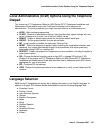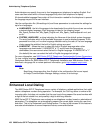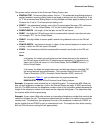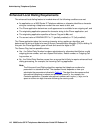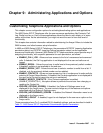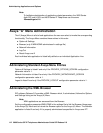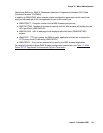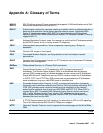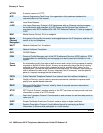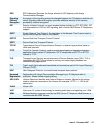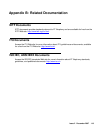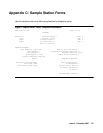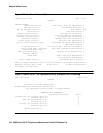
Issue 2 December 2007 115
Appendix A: Glossary of Terms
802.1D
802.1Q
802.1Q defines a layer 2 frame structure that supports VLAN identification and a QoS
mechanism usually referred to as 802.1D.
802.1X Authentication method for a protocol requiring a network device to authenticate with a
back-end Authentication Server before gaining network access. Applicable 9600
Series IP telephones support IEEE 802.1X for pass-through and for Supplicant
operation with the EAP-MD5 authentication method. SIP Software Release 2.0 and up
supports 802.1X.
ARP Address Resolution Protocol, used, for example, to verify that the IP Address provided
by the DHCP server is not in use by another IP telephone.
CELP Code-excited linear-predictive. Voice compression requiring only 16 kbps of
bandwidth.
CLAN Control LAN, a type of circuit pack.
CNA Converged Network Analyzer, an Avaya product to test and analyze network
performance.
DHCP Dynamic Host Configuration Protocol, an IETF protocol used to automate IP Address
allocation and management.
DiffServ Differentiated Services, an IP-based QoS mechanism.
DNS
Domain Name System, an IETF standard for ASCII strings to represent IP
Addresses. The Domain Name System (DNS) is a distributed Internet directory
service. DNS is used mostly to translate between domain names and IP Addresses.
Avaya 9600 Series IP Telephones can use DNS to resolve names into IP Addresses.
In DHCP, TFTP, and HTTP files, DNS names can be used wherever IP Addresses
were available as long as a valid DNS server is identified first.
EAP Extensible Authentication Protocol, or EAP, a universal authentication framework
frequently used in wireless networks and Point-to-Point connections defined by RFC
3748. EAP provides some common functions and a negotiation of the desired
authentication methods, two of which are EAP-MD5 and EAP-TLS. When EAP is
invoked by an 802.1X enabled NAS (Network Access Server) device such as an
802.11 a/b/g Wireless Access Point, modern EAP methods provide a secure
authentication mechanism and negotiate a secure PMK (Pair-wise Master Key)
between the client and the NAS.
H.323 A TCP/IP-based protocol for VoIP signaling. An alternative to SIP for VoIP signaling.
One of the two protocols 9600 Series IP Telephones support.
HTTP Hypertext Transfer Protocol, used to request and transmit pages on the World Wide
Web.
1 of 3



